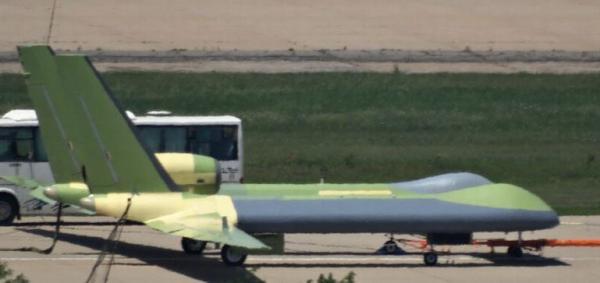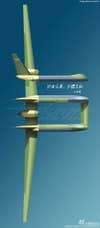A Closer Look At China’s Divine Eagle Drone
The world's biggest UAV


Divine Eagle
Since photos in May 2015 emerged of the Divine Eagle, China’s giant UAV has been getting a lots of international attention. With its giant, double bodied design, carrying high performance anti-stealth radars, the drones are a potential key part of China’s offensive and defensive military strategy in the coming years. Formations of Divine Eagle UAVs are expected to provide an early warning line to detect threats to China’s airspace, like cruise missiles and stealth bombers, as well as be able to take on such missions as hunting for aircraft carriers in the open waters of the Pacific.

Divine Eagle
In late June 2015, new photos emerged of the Divine Eagle prototype, allowing a clearer look at its details. The Divine Eagle has a single engine nestled between its tailfins, with a diameter of over 1 meter. This makes the engine likely to be a medium non-afterburning turbofan producing 3 to 5 tons of thrust, which in turn is usually enough to power a UAV of 12-18 tons in maximum takeoff weight. In comparison, the largest American UAV in open service, the RQ-4 Global Hawk, uses a F-137-RR-100 turbofan engine with 3.4 tons of thrust. The Divine Eagle has a five wheel landing gear layout. The double bodied layout was chosen in order to provide the surface area for carrying large radars, while minimizing internal volume and weight.

Color in the Eagle
By using the single deck bus in the background (probably 3.2 meters tall, like most buses of its type) as a very crude visual yardstick, a very rough comparison suggests that the Divine Eagle is 6 meters tall, and 15 meters long (since most high altitude large UAVs have a wingspan to body length ratio of 2.5:1 to 3:1, the wingspan of the Divine Eagle is likely its be 35 to 45 meters across). The differing yellow, green and grey blue primer coatings on the Divine Eagle suggest the usage of different materials like composite and aluminum alloys for different sections of the UAV. For example, the grey blue forward dome on the port (left) body is likely to contain a satellite dish for long distance communications, suggesting that the material used in the grey blue sections are likely to be highly permeable to electromagnetic waves. The grey blue is also to be found on the starboard side of the right body (facing outside), and if the airframe composition is symmetrical, likely to be found on the portside of the left body (also facing out). Such electromagnetic permeables are likely to house the Divine Eagle’s long range anti-stealth radars (radomes are made of radar transparent materials), indicating that its radar arrays are 10 meters long, which suggests transmitting lower frequency (L and S Band) radar waves (most stealth aircraft are optimized to evade higher frequency, such as X band, radar). The green primer likely covers lightweight materials such as composite, while the yellow primer near the engine suggests some stronger metal alloy, probably to support the engine weight and height.

Divine Eagle Hunts
There is much to learn about the system, but its significance is great. Given the long endurance of the huge Divine Eagle, it could in the future take on tasks that range from watching over China’s manmade South China Sea islands to tailing foreign warships in waters near and far.
You may also be interested in:
Divine Eagle, China’s Stealth Hunting Drone, Takes Shape
China Flies Its Largest Ever Drone: the Divine Eagle
China Shows Off Growing Drone Fleet
China Shows Off Holographic Ground Control System for Drones